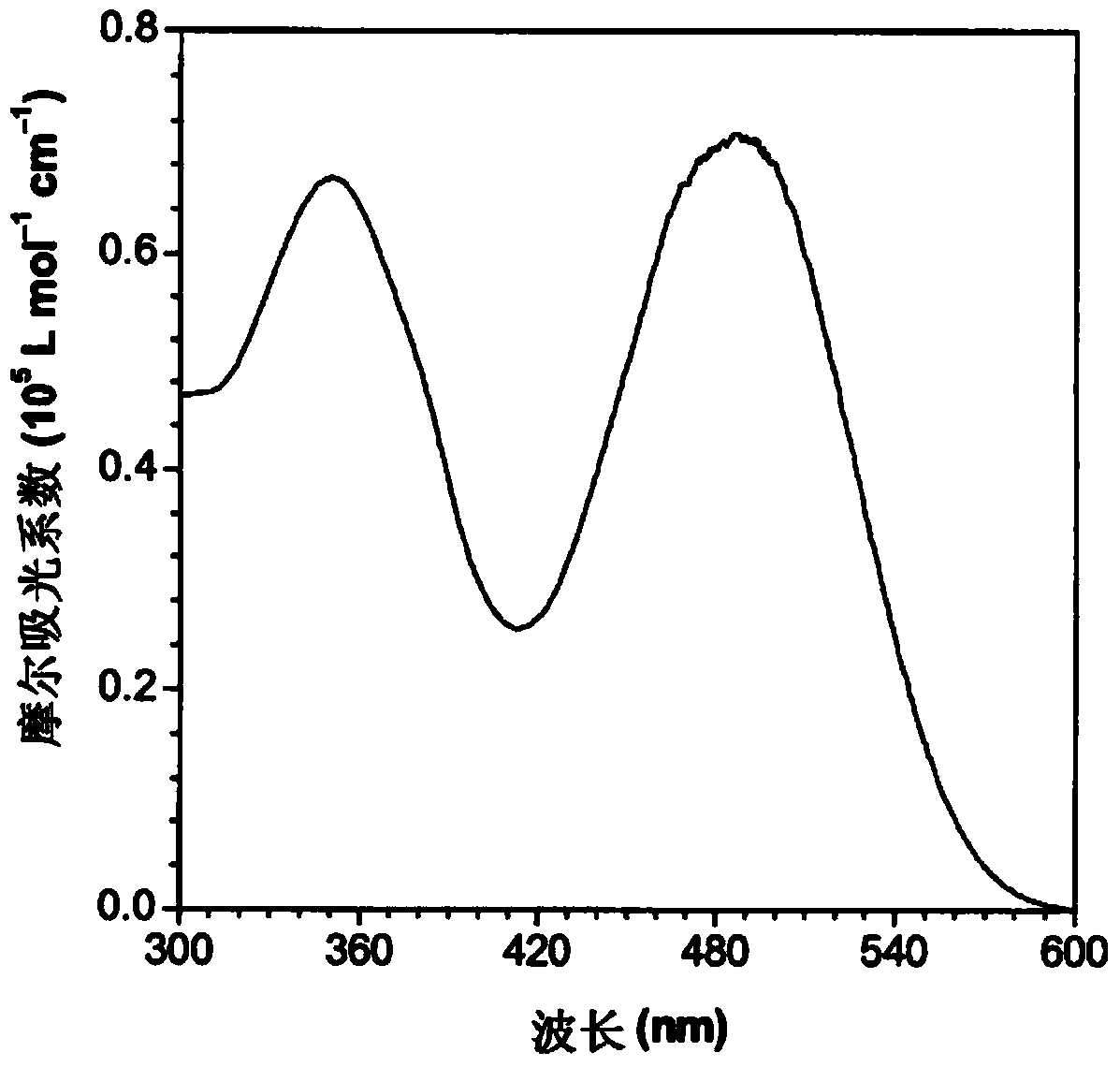Biocompatible nanoparticles with aggregation induced emission characteristics as fluorescent bioprobes and methods of using the same for in vitro and in vivo imaging
A technology of fluorescent biological probes and aggregation-induced luminescence, which is applied in biochemical equipment and methods, measurement/inspection of microorganisms, preparations for in vivo experiments, etc., and can solve problems such as limitations of nanoparticle bioimaging and limited fluorescence intensity
- Summary
- Abstract
- Description
- Claims
- Application Information
AI Technical Summary
Problems solved by technology
Method used
Image
Examples
preparation example Construction
[0154] Preparation method of nanoparticles loaded with fluorescent compounds
[0155] Another embodiment of the present invention is a method for preparing fluorescent compound-loaded nanoparticles further comprising a biocompatible polymer matrix. In another embodiment, nanoparticles loaded with fluorescent compounds are used as fluorescent bioprobes. First, prepare a solution containing an organic solvent and a fluorescent compound. The organic solvent described here is preferably a solvent with a low boiling point, such as tetrahydrofuran (THF). An aqueous solution of the biocompatible polymer is then prepared. The THF solution and the aqueous solution were mixed together and sonicated. The fluorescent compound and biocompatible polymer can then be cross-linked. However, if the biocompatible polymer is DSPE-PEG, no cross-linking is required. Finally, THF is removed to form fluorescent compound-loaded nanoparticles further comprising a biocompatible polymer matrix.
...
Embodiment 1
[0283] Synthesis of TPE-TPA-DCM
[0284] The reaction scheme for the synthesis of TPE-TPA-DCM is shown below.
[0285]
[0286] 2-(2,6-dimethyl-4H-pyran-4-ylidene) malononitrile (2) is synthesized from 2,6-dimethyl-4-pyrone (1), and the yield is 73%. (2) TPA-DCM and Br-TPA-DCM were obtained through Knoevenagel condensation reaction with TPA-containing aldehyde, and the yields were both higher than 70%. Under alkaline conditions, tetrakis(triphenylphosphine) palladium (Pd(PPh 3 ) 4 ) as a catalyst, TPE-TPA-DCM was obtained by Suzuki coupling reaction between Br-TPA-DCM and 4-(1,2,2-triphenylvinyl)phenylboronic acid (3), with a yield of 60 %. TPE-TPA-DCM was separated and purified by column chromatography followed by recrystallization.
[0287]The specific experimental synthesis steps of the dye are as follows. 4-(1,2,2-Triphenylvinyl)phenylboronic acid (526mg, 1.4mmol) and potassium phosphate (1060mg, 5mmol) were dissolved in 50mL THF and 8mL water, and added to Br- ...
Embodiment 2
[0291] Preparation of BSA nanoparticles loaded with fluorescent compounds
[0292] BSA nanoparticles loaded with TPE-TPA-DCM were prepared by an improved desolvation method ( image 3 ). Different nanoparticles are obtained by changing the feed ratio, which refers to the mass ratio of the fluorescent compound to the BSA in the mixture, and the variation range is 0.25-5wt%. Briefly, BSA (13 mg) was first dissolved in 5 mL Milli-Q water. Subsequently, under room temperature and ultrasonic conditions, a predetermined amount of TPE-TPA-DCM in THF (8 mL, desolvating reagent) solution was added dropwise to BSA aqueous solution using a probe sensor of an ultrasonic instrument to obtain a fluorescent compound loaded The BSA nanoparticle, ultrasonic instrument is the XL2000 probe ultrasonic instrument of American MisonicIncorp company, output power is 18W. A small amount of glutaraldehyde solution (5 μL, 50%) was added to the nanoparticle solution for 4 hours at room temperature for...
PUM
 Login to View More
Login to View More Abstract
Description
Claims
Application Information
 Login to View More
Login to View More - R&D
- Intellectual Property
- Life Sciences
- Materials
- Tech Scout
- Unparalleled Data Quality
- Higher Quality Content
- 60% Fewer Hallucinations
Browse by: Latest US Patents, China's latest patents, Technical Efficacy Thesaurus, Application Domain, Technology Topic, Popular Technical Reports.
© 2025 PatSnap. All rights reserved.Legal|Privacy policy|Modern Slavery Act Transparency Statement|Sitemap|About US| Contact US: help@patsnap.com



